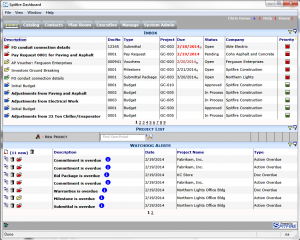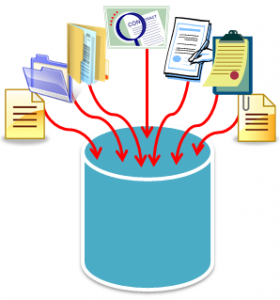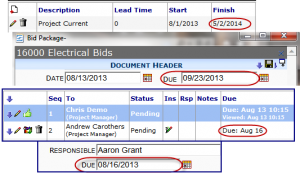 We all know that keeping on top of things is critical. This is true both in our professional and personal lives. However, when certain circumstances present themselves, we are easily overwhelmed with information and the things we need to do even with the right tools at hand.
We all know that keeping on top of things is critical. This is true both in our professional and personal lives. However, when certain circumstances present themselves, we are easily overwhelmed with information and the things we need to do even with the right tools at hand.
Author Archives: Luther Erlund
Where’s Your Data?
 So many people assume that critical project data is accessible and safe because different people on the team claim that “they have it covered” or “I know where it is.” However, in many cases, the data is not really centralized.
So many people assume that critical project data is accessible and safe because different people on the team claim that “they have it covered” or “I know where it is.” However, in many cases, the data is not really centralized.
Documents are scattered in different people’s personal folders, their desktop or somewhere in their email Inbox, or they consist of just a plain piece of paper. All of this means that the data is really sitting on multiple information islands. Scattered information happens when people do not work in a centralized program that manages all of the data for them. What if someone leaves for the day or forever? How do others find all the information they need? Usually with a frantic search punctuated by cries of “where is it??”
TweetThat Pesky Project Due Date!
 We are all concerned about “THAT DAY” when a project is due…isn’t everyone??
We are all concerned about “THAT DAY” when a project is due…isn’t everyone??
From the start of a new project, that due day looms large. However, there are micro due dates within every project that need to be dealt with on a daily basis in order to meet that “Holy Grail” end date. Project managers who need to stay on top of all these due dates need a project management system that is designed to handle this depth of concept. Being able to see and set multiple levels of due dates specific to each individual project is of paramount importance.
For, of course, each project includes many different documents with their own individual needs; these could include RFIs, RFQs, Pay Requests, Meeting minutes, Compliance requirements, etc… and many more. And there are other levels! Perhaps we have a specific due date for a document that has item-specific due dates. And those items are the responsibilities of specific people who must do their job in order for the next person to do his job, all by specific due dates.
Each missed due date is the potential start of a delay that ends with the project missing it’s major end due date. This is particularly true if a missed due date is not caught and corrected as soon as possible. And a project that does not end in time is usually considered a mismanaged project, often with costly consequences.
That is why the Spitfire Project Management System uses due dates on many different levels. Project Managers indicate the project final due date, and when each document is due, and when individual items on the document are due, and when every person who needs to take action on that document needs to take such action by. Alerts can be set up to notify the project managers when any of the due dates are approaching or have passed.
A proper project management system with complex levels of information and due date tracking will make any project manager’s job that much easier. Perhaps that due date can be met after all!
TweetSimplicity vs. Functionality
 What I am about to say may sound very elementary at first; however, it warrants careful thought. It is often very difficult for those looking at project management solutions to decide what type of system they should look at and subsequently move to.
What I am about to say may sound very elementary at first; however, it warrants careful thought. It is often very difficult for those looking at project management solutions to decide what type of system they should look at and subsequently move to.
The fact that a system is being looked at in the first place is usually a result of trying (and failing) to solve problems that currently exist and are causing headaches. At first glance, it is usually easier to go with the simplest system that appears to fix the problems and deals with the limited issues “where it hurts the most.” The choice may also involve the general misconception that everyone can learn a simple system quicker and that it will quickly solve a few of the current problems (but only a few of them). Comparatively, in the medical world, this means to “treat the symptoms but not find the cure.”
Tweet